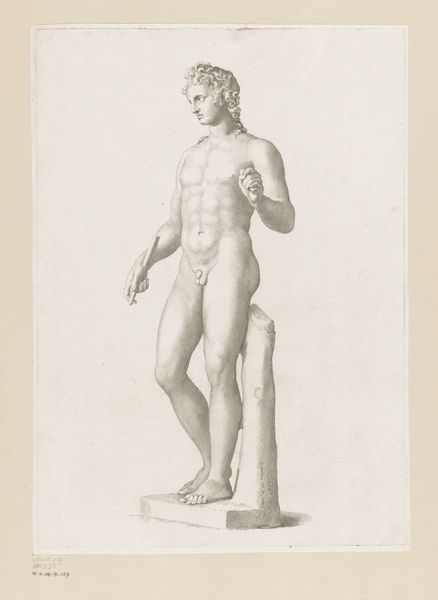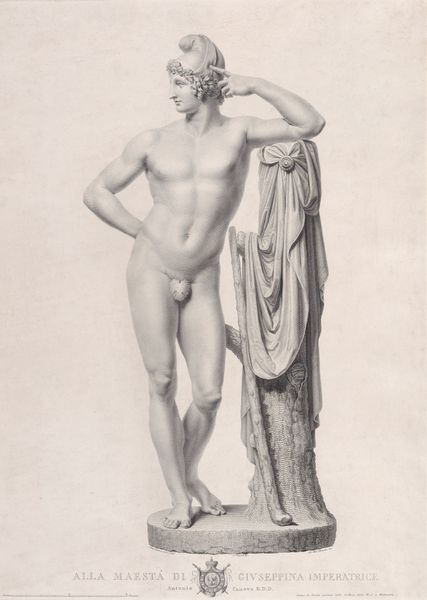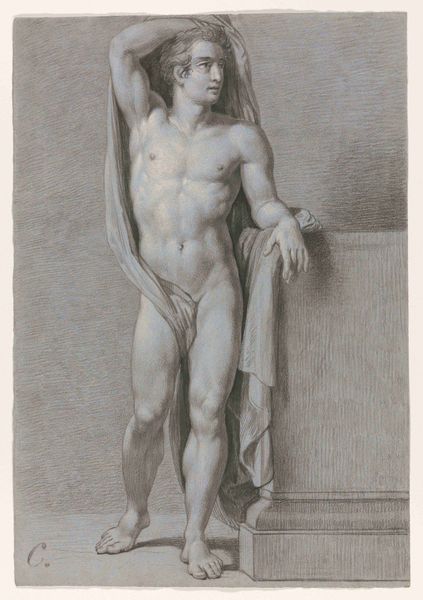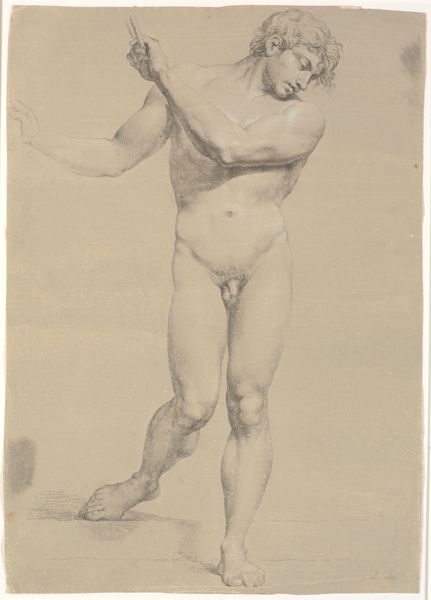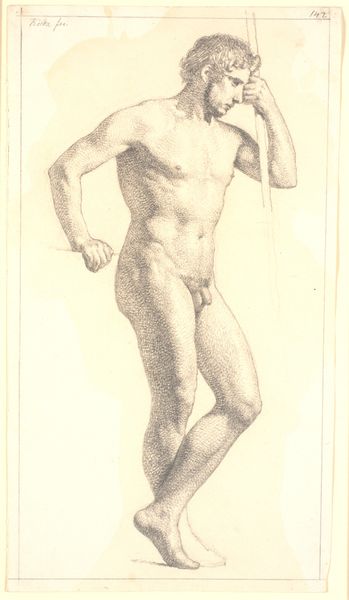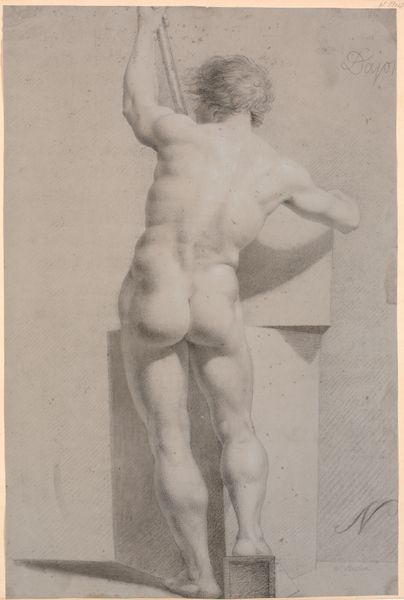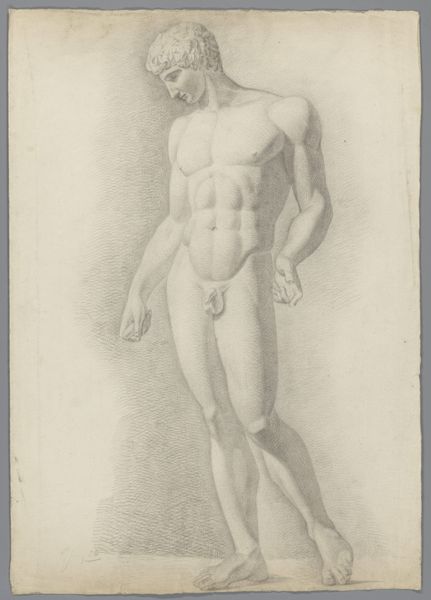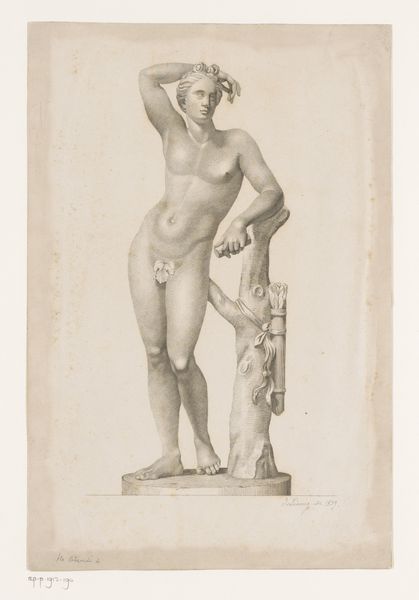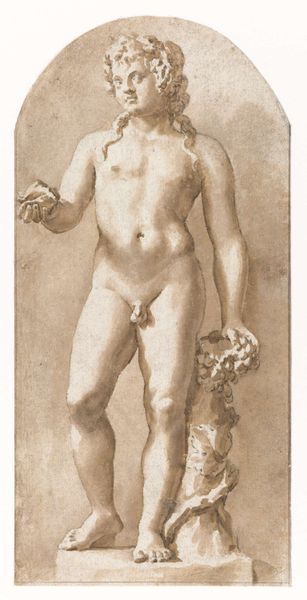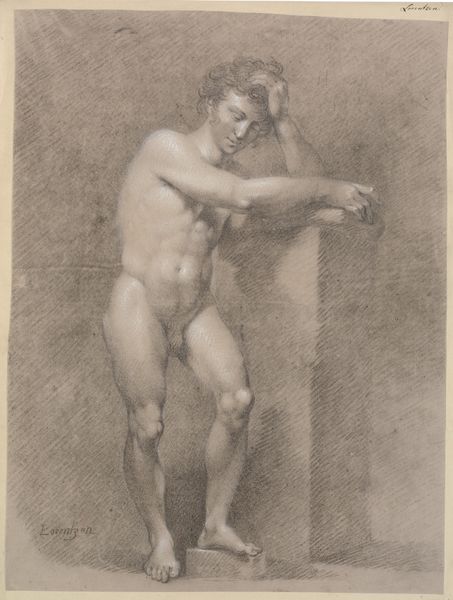
Tegning efter gips: "Eros fra Centocelle" (Vatikanet) 1831 - 1835
0:00
0:00
drawing, pencil
#
portrait
#
drawing
#
classical-realism
#
charcoal drawing
#
figuration
#
form
#
pencil drawing
#
pencil
#
academic-art
#
realism
Dimensions: 279 mm (height) x 179 mm (width) (bladmaal)
Dankvart Dreyer made this drawing of a plaster cast of the Eros from Centocelle at an unknown date. The artwork provides insight into the art education system of 19th-century Denmark. Drawings after plaster casts were a core component of academic art training. The practice instilled an understanding of classical forms, proportion, and anatomy. But more than just technical skill, Dreyer’s drawing reflects the values of the art academy itself. The statue it depicts, a Roman copy of a Greek original, represented an ideal of beauty deeply entwined with social and intellectual prestige. To appreciate fully Dreyer’s drawing, we need to consider the role of institutions, the classical ideals they promoted, and the social hierarchies they reinforced. By looking at archival sources of the Royal Danish Academy of Fine Arts, one can fully understand the value it placed on the classical tradition. Art history is about understanding not just the artwork, but the world that shaped its creation and reception.
Comments
No comments
Be the first to comment and join the conversation on the ultimate creative platform.
